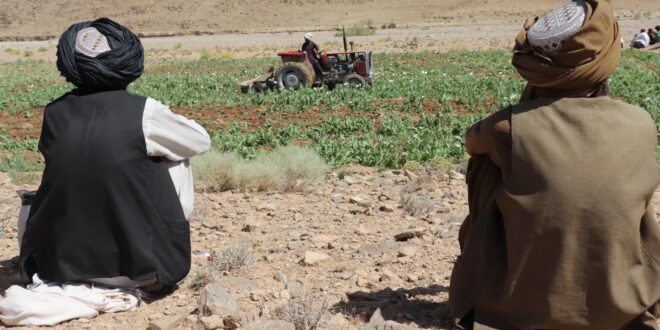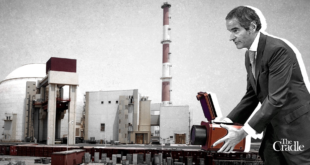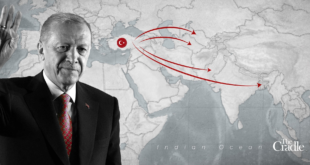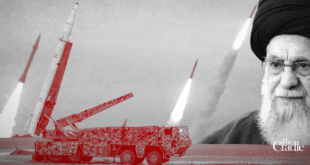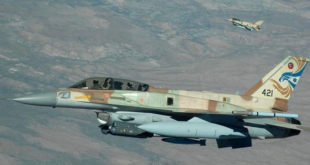In April 2022, less than a year after it took power in Kabul, the Taliban announced it would prohibit the cultivation, production, trafficking, trade and consumption of all narcotics in Afghanistan. At the time, many observers were skeptical of both the group’s sincerity, due to the revenues it had long generated from the drugs industry, and its ability to enforce the ban.
Two years later, however, new evidence suggests that the Taliban’s narcotics ban has kept poppy cultivation at historically low levels for a second consecutive year. As a result, many experts have raised legitimate concerns that a resulting heroin shortfall in Europe could lead to an influx of highly potent synthetic opioids to fill the gap. In the U.S. and Canada, these synthetic opioids have caused the deadliest drug crisis in North American history.
However, for now there has been no corresponding drop in the availability of Afghan heroin on European streets, and it may be some time before there is. Nevertheless, alongside closely monitoring the supply of Afghan heroin, European governments are rightly working hard to counter synthetic opioids that are already appearing in the illegal drug supply.
For decades, Afghanistan was the world’s largest opium producer and the source of nearly all of Europe’s heroin. However, after the Taliban introduced a ban on all narcotics in April 2022, poppy cultivation decreased from 219,744 hectares in 2022 to 31,088 hectares in 2023, a reduction of 86 percent. As of July 2024, crop mapping of 14 Afghan provinces responsible for 92 percent of the country’s poppy cultivation in 2022 shows that cultivation has fallen to under 4,000 hectares this year, compared to around 16,000 hectares in 2023 and almost 202,000 hectares in 2022.
What is less clear, however, is how this reduction in poppy cultivation will affect the supply of heroin to European consumer markets over the long term. In the U.K., for instance, heroin purity has decreased, and the wholesale price has increased from £12,000 per kilo, or roughly $15,000, prior to the COVID-19 pandemic to roughly £26,000, or $33,000, today. Despite these fluctuations, the U.K.’s National Crime Agency has reported that there are still “significant reserves” of heroin in the country.
Meanwhile, along the Balkan route that serves as the main transit corridor from Afghanistan to Europe, countries are continuing to interdict substantial quantities of heroin. For example, in April 2024, Bulgarian authorities seized just over 400 kilograms, or roughly 900 pounds, with an estimated value of €8.5 million, or $9.3 million. These factors have led the European Union Drug Agency to cautiously conclude that “to date, there have been no strong signals of disrupted heroin flows towards the EU.”
All of this stands in sharp contrast to the first time the Taliban implemented a poppy ban in 2000 and 2001, when the U.K. saw a reduction in the availability of heroin 12 months after the poppy harvest ended.
So, what explains this apparent contradiction of significantly reduced opium cultivation in Afghanistan and a largely uninterrupted flow of heroin to Europe? The answer lies in part in the different contexts of the Taliban’s first narcotics ban and the prohibition it introduced two years ago.
The main reason why Europe has not yet seen a heroin shortage is that vast amounts of opium are still currently being stored within Afghanistan, while little evidence suggests the Taliban is enforcing a ban on the trade and trafficking of opiates.
In 2000, the Taliban announced its ban three months after poppy crops were harvested, when opium prices were low. As a result, farmers were forced to sell much more of their poppy harvest to meet their household expenses, rather than store some opium as a form of savings. Moreover, the Afghan opium industry was considerably smaller two decades ago, when poppy cultivation seldom occupied more than 70,000 hectares of land.
By comparison, the latest ban announced in April 2022 did not come into effect until later that year. Consequently, farmers were able to harvest their poppy and then store the opium extracted from it at a time when prices had soared in anticipation of the ban. Furthermore, over the previous decade, the land dedicated to poppy cultivation had approximately tripled in size, regularly surpassing 200,000 hectares.
But the main reason why Europe has not yet seen a heroin shortage is that vast amounts of opium are still currently being stored within Afghanistan. Pioneering research using high-resolution satellite imagery has revealed that farmers in the former desert lands of southwest Afghanistan—an area responsible for producing 40 percent of the country’s opium—could have stored approximately 16,500 metric tons of opium prior to 2022. This is in addition to the approximately 1,700 metric tons that entered the market from the 2023 poppy harvest, an amount of opium that could produce roughly 1,000 metric tons of heroin. To put this into context, the combined annual heroin consumption rate in the EU and U.K. is approximately 160 metric tons.
There is also little evidence to suggest that the Taliban is enforcing a ban on the trade and trafficking of opiates, despite their claims to the contrary. Opiates continue to be sold within the country, and Afghanistan’s neighbors are still seizing large volumes of drugs at their borders.
Another indicator of abundant opium supply within the country is that prices have continued to fall this year, from over $1,000 per kilogram at their peak in December 2023 to around $580 per kilogram today. Stockpiles, continued cultivation—particularly in the northeastern province of Badakhshan, where the Taliban’s counternarcotics efforts have largely failed—and reports of increased cultivation in Pakistan are the most likely explanations for this downward trend.
There are at least two potential scenarios that could unfold over the next few years, both of which will determine if European supplies of Afghan heroin run out. The first scenario is that the Taliban sustains its poppy ban, while gradually clamping down on the trade of opiates, resulting in stockpiles dwindling. This could greatly reduce the supply of heroin to Europe, although it is important to note that drug traffickers prioritize supplying European drug markets because of their high value.
A second and more likely scenario is that the Taliban find it more difficult to prevent poppy cultivation in future years. While large landowners have prospered from the ban as a result of the large amounts of opium they have stored and rising prices, landless farmers have faced severe economic consequences. If the ban continues, it will increase the potential for noncompliance and increased political instability.
Moreover, as noted above, the Taliban have failed to effectively implement the ban in Badakhshan, with the province still responsible for a substantial amount of opium over the past two years. This could prompt other provinces to soon return to poppy cultivation. In the longer term, if the Taliban cannot sustainably transition farmers to other forms of income, the ban will collapse.
In any case, it seems likely that the European drug market will continue to evolve, including the possibility of increased prevalence of synthetic opioids. In response, European governments are already prioritizing tackling both the supply and demand for synthetic opioids. In the U.K., for example, that includes setting up a cross-government taskforce and learning from international partners, such as the U.S. and Canada, to deliver a timely, evidence-based response to the risk posed by synthetic opioids.
Nevertheless, the available evidence suggests that Europe is not yet on the cusp of a major heroin shortage, meaning that governments must continue to address both this older threat along with newer ones, such as synthetic opioids.
 Eurasia Press & News
Eurasia Press & News
